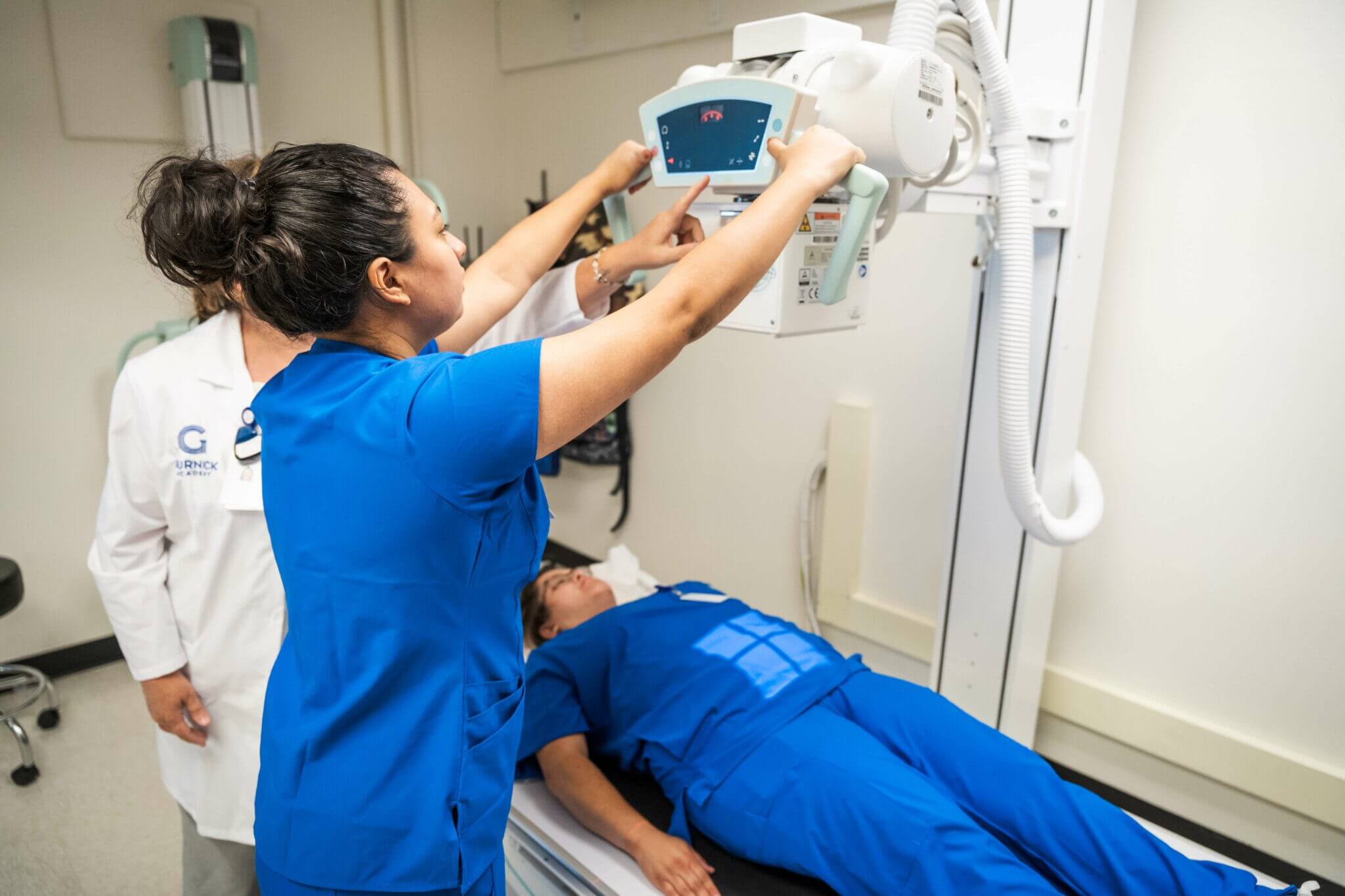
The role of an X-ray or Radiology Assistant (often called a Radiologic Technician or Radiologic Technologist) is essential in the healthcare system. This position involves performing diagnostic imaging exams like X-rays and assisting radiologists in the diagnosis and treatment of patients. Below are the full course details typically involved in training for a career as an X-ray or Radiology Assistant:
1. Course Prerequisites
- Education: High school diploma or equivalent (GED).
- Background in Science: Courses in biology, physics, anatomy, and math are often recommended.
- Medical Terminology: Familiarity with medical terms can be advantageous.
- Background Check: Required in many programs due to clinical rotations in healthcare settings.
2. Course Objectives
- Gain the knowledge and skills to perform diagnostic imaging procedures.
- Learn to operate X-ray and other imaging equipment safely and accurately.
- Understand anatomy, patient positioning, and radiation protection.
- Develop patient care skills, including effective communication and compassion.
- Prepare for certification exams like the American Registry of Radiologic Technologists (ARRT).
3. Key Topics Covered
1. Introduction to Radiology and Imaging
- Overview of the radiology field and the role of radiologic technologists.
- History and evolution of medical imaging.
- Basic principles of radiographic imaging and medical imaging modalities (e.g., X-ray, CT, MRI).
2. Human Anatomy and Physiology
- Detailed study of the human body systems (skeletal, muscular, respiratory, cardiovascular).
- Understanding how anatomy relates to imaging techniques.
- Anatomical terminology and patient positioning.
3. Principles of Radiographic Imaging
- X-ray production and the physics of radiation.
- Image formation, factors affecting image quality (contrast, density, detail, and distortion).
- Basics of radiographic techniques, including image receptor systems (digital and analog).
- Introduction to other modalities (CT, MRI, Ultrasound).
4. Radiation Protection and Safety
- Radiation physics and dosimetry.
- ALARA principle (As Low As Reasonably Achievable) for minimizing exposure.
- Shielding methods, patient protection, and proper equipment use.
- Personal safety protocols and use of protective equipment (e.g., lead aprons, thyroid shields).
5. Patient Care and Management
- Principles of patient care, including patient preparation, medical history, and consent.
- Communication skills for diverse patient populations.
- Techniques for positioning patients for various imaging procedures.
- Handling emergency situations and providing first aid.
6. Radiographic Procedures and Techniques
- Positioning techniques for imaging different body parts (e.g., chest, abdomen, extremities).
- Contrast media usage in procedures (e.g., barium studies).
- Understanding special procedures like fluoroscopy, angiography.
- Proper image critique and troubleshooting of positioning or exposure errors.
7. Radiographic Equipment Operation
- Detailed study of radiography machines, X-ray tubes, and digital imaging systems.
- Maintenance and quality control of radiographic equipment.
- Operation of CR (Computed Radiography) and DR (Digital Radiography) systems.
- Introduction to PACS (Picture Archiving and Communication System) for managing and storing images.
8. Ethics and Law in Radiologic Technology
- Professional ethics and the role of confidentiality in patient care.
- Legal responsibilities, including HIPAA regulations.
- Understanding consent and patient rights.
- Professionalism and teamwork in healthcare settings.
9. Clinical Rotations
- Hands-on training in hospitals or clinics under the supervision of experienced radiologic technologists.
- Exposure to a variety of diagnostic imaging procedures.
- Interaction with patients, learning patient care, and practicing safety protocols.
- Evaluation of clinical competencies and image quality.
4. Course Structure
- Program Duration: Typically 2 years (Associate Degree) or 18-24 months for a Diploma/Certificate program.
- Lecture Hours: 20-30 hours per week for theoretical learning.
- Clinical Practice: Approximately 600-1,200 hours of clinical training, depending on the program.
- Online/Hybrid Options: Some programs offer online lectures, but clinical training must be completed in person.
5. Laboratory and Clinical Training
- Hands-on training with radiographic equipment.
- Simulations and practice sessions for patient positioning.
- Use of dummies or phantoms for imaging practice.
- Learning quality control techniques for maintaining imaging standards.
6. Certification and Licensing
- Graduates are typically required to pass a certification exam by the American Registry of Radiologic Technologists (ARRT).
- State Licensure: Most states in the U.S. require licensure to practice, which often involves passing the ARRT exam and meeting other state-specific requirements.
- Continuing Education: To maintain certification, ongoing education and professional development are usually required.
7. Reference Books and Study Resources
- Radiologic Science for Technologists: Physics, Biology, and Protection by Stewart C. Bushong.
- Merrill’s Atlas of Radiographic Positioning & Procedures by Bruce W. Long, Jeannean Hall Rollins, and Barbara J. Smith.
- Introduction to Radiologic Technology by LaVerne Tolley Gurley and William J. Callaway.
- ARRT exam preparation guides and practice questions.
8. Assessment and Grading
- Assignments and Quizzes: 20%
- Lab Work and Clinical Evaluations: 30%
- Mid-term and Final Exams: 30%
- Practical Skills Tests: 20%
9. Career Opportunities
- Job Titles: Radiologic Technologist, X-ray Technician, Radiology Assistant.
- Work Environments: Hospitals, outpatient clinics, imaging centers, urgent care facilities, mobile imaging units.
- Specializations: With additional training, one can specialize in CT, MRI, mammography, or interventional radiography.
10. Typical Salary and Career Outlook
- Median Salary: As of 2024, radiologic technologists in the U.S. typically earn between $55,000 and $75,000 per year, with variations based on location, experience, and specialization.
- Job Growth: The Bureau of Labor Statistics (BLS) projects that employment of radiologic technologists will grow faster than average due to the aging population and increased need for diagnostic imaging.
Summary
A course in Radiology or X-ray technology provides a blend of medical knowledge, technical skills, and patient interaction, preparing students for a rewarding career in the healthcare industry. With strong job prospects and the opportunity for specialization, it is an excellent choice for those interested in medical imaging and patient care.
